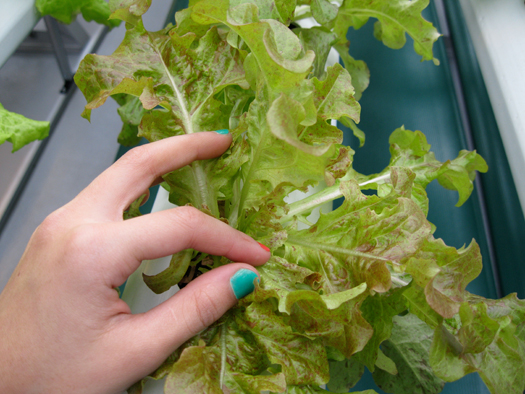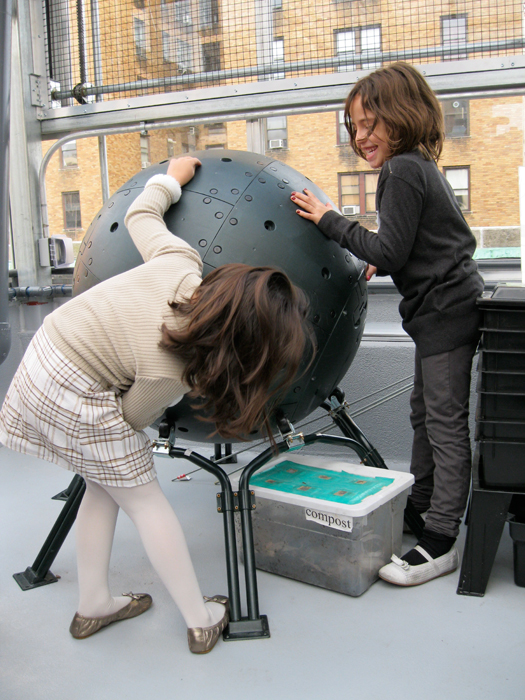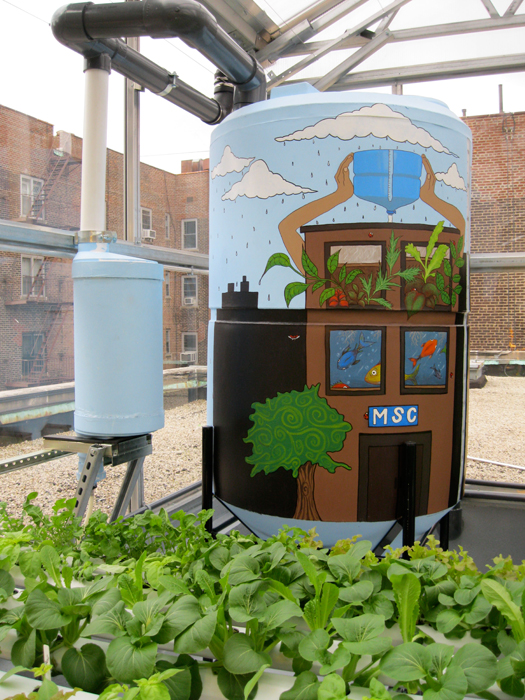
Demonstrating the bounty: Hydroponically grown letttuce at Manhattan School for Children's new rooftop greenhouse.
Never underestimate the determination of a New York City public school parent. This may be the most important lesson of a rooftop greenhouse at Manhattan School for Children, on West 93rd Street. The glass-walled environmental science laboratory, which opened last month, was a three-year project of a trio of mothers, none of whom had a science background or experience tussling with the bureaucracy of city agencies (handy if you’re hoping to put a 1,420-square-foot hydroponic farm capable of producing 8,000 pounds of fruit and vegetables annually on top of a public institution).
Two of the women didn’t even hold American passports, noted Manuela Zamora (Bolivian), who led the project with Sidsel Robards (Danish) and Nancy Easton. But after an inspiring visit to the Science Barge, a floating greenhouse on the Hudson River, they obtained the clearances required by every agency, from the school building authority at New York’s Department of Education to the State Historic Preservation Office, raised the $800,000 budget — most of it privately — and oversaw the construction in collaboration with New York Sun Works, the floating greenhouse’s designer. Kiss + Cathcart, Architects built the structure, which features a twinwall polycarbonate roof and retractable heat blanket for thermal efficiency.

Rotating the composting drum.
On December 6, the ribbon — or rather, handfuls of symbolic lettuce leaves — was cut to launch the balmy, wormy, yet predominantly soil-less garden overlooking the rooftops of New York’s Upper West Side. In this net-zero-energy, pesticide-free zone, enlivened by colorful water tanks that will harvest an estimated 40,000 gallons of rain each year, schoolchildren introduced visitors to a barrel of tilapia used in fertilizing plants. Other kids made a game of rotating composting drums, or showed off rows of hydroponically grown arugula and mizuna. The perplexing spectacle of the actress Lauren Bacall being tutored among the greenery was explained by the fact that Sidsel Robards is her daughter-in-law. Bacall’s grandson Calvin Robards, 11, was among the guides discoursing on the value of nitrogen in tilapia poop.
Apart from parental tenacity, the garden’s lessons will include nutrition, biodiversity, climate change (via a weather station) and calculations involving waste management and water use. Produce grown throughout the year — from cucumbers to strawberries to squash — will be distributed in the school cafeteria or donated to local soup kitchens. In summer, the greenhouse will host teacher training programs for environmental science studies. And Zamora and Robards are working with New York Sun Works to replicate the model at 100 more schools.

Tanks will store 30,000 gallons of rainwater harvested each year.
The women have even put their mark on local legislative efforts, said New York City Council Member Gale Brewer. Her office not only supplied a grant for the initiative but is also working to provide tax abatements for citizens who build greenhouses on their roofs. For now, the effect of Manhattan School for Children’s focus on sustainability has been local and powerful. The kids, Zamora says, are “fanatical recyclers.”


Comments [5]
01.04.11
04:04
01.06.11
10:32
01.24.11
08:29
It is fantastic that students are learning the importance of ecological design at such a young age, because it is one step closer to bringing as many people to this point as possible. By learning this young, these students have a great advantage, and hopefully replicating this model at 100 more schools really does work out.
10.05.11
09:24
Great article.
01.22.14
08:58